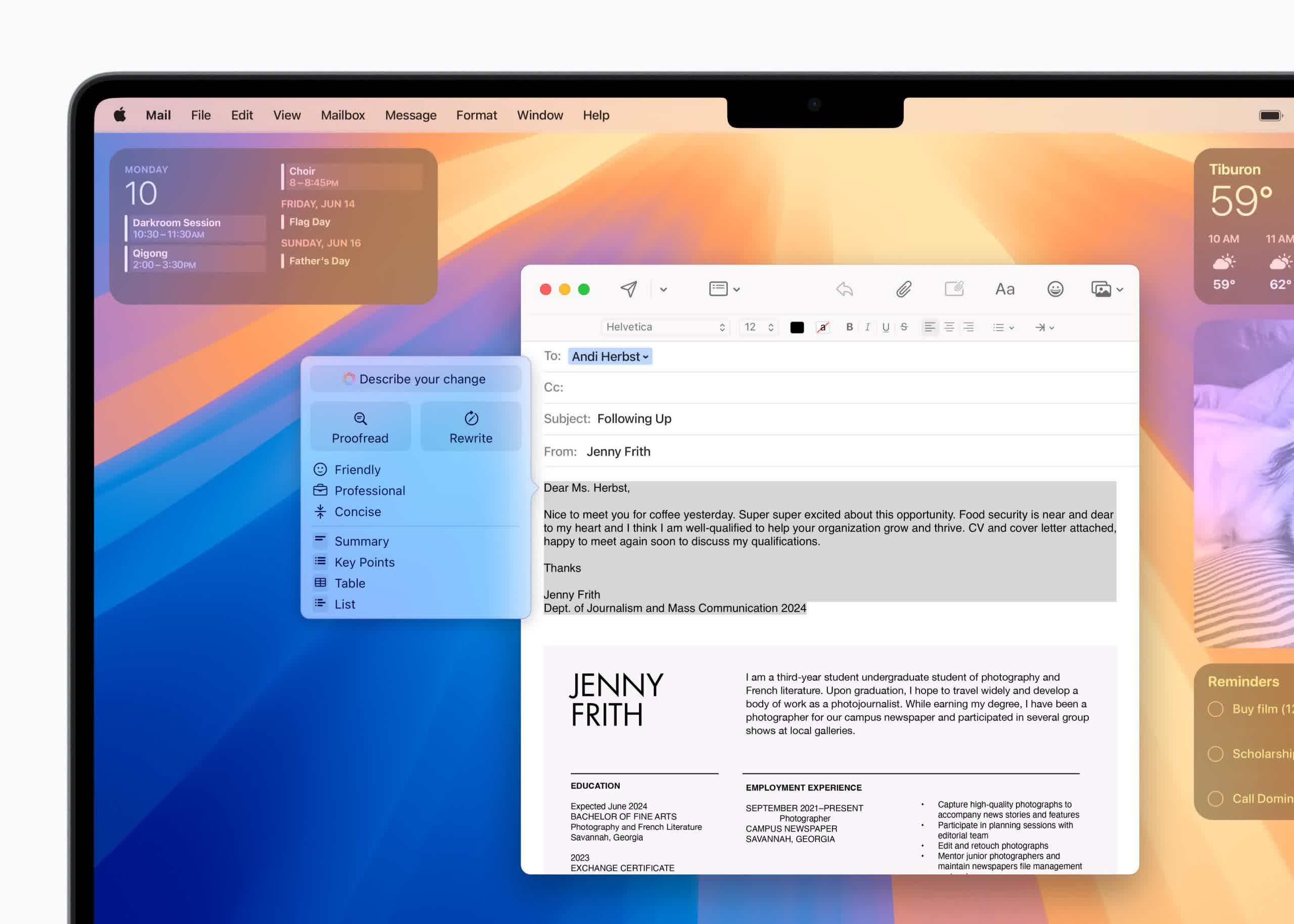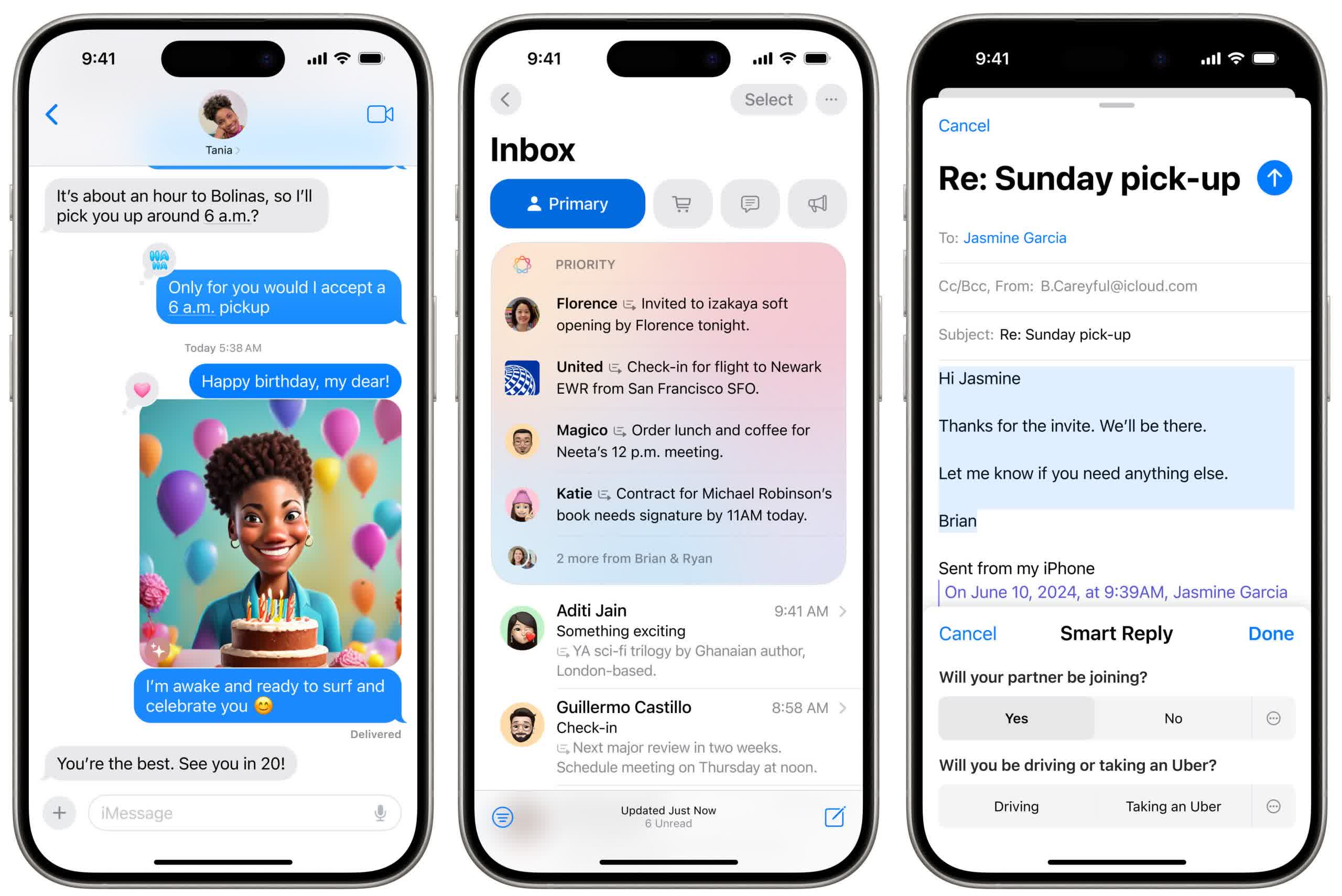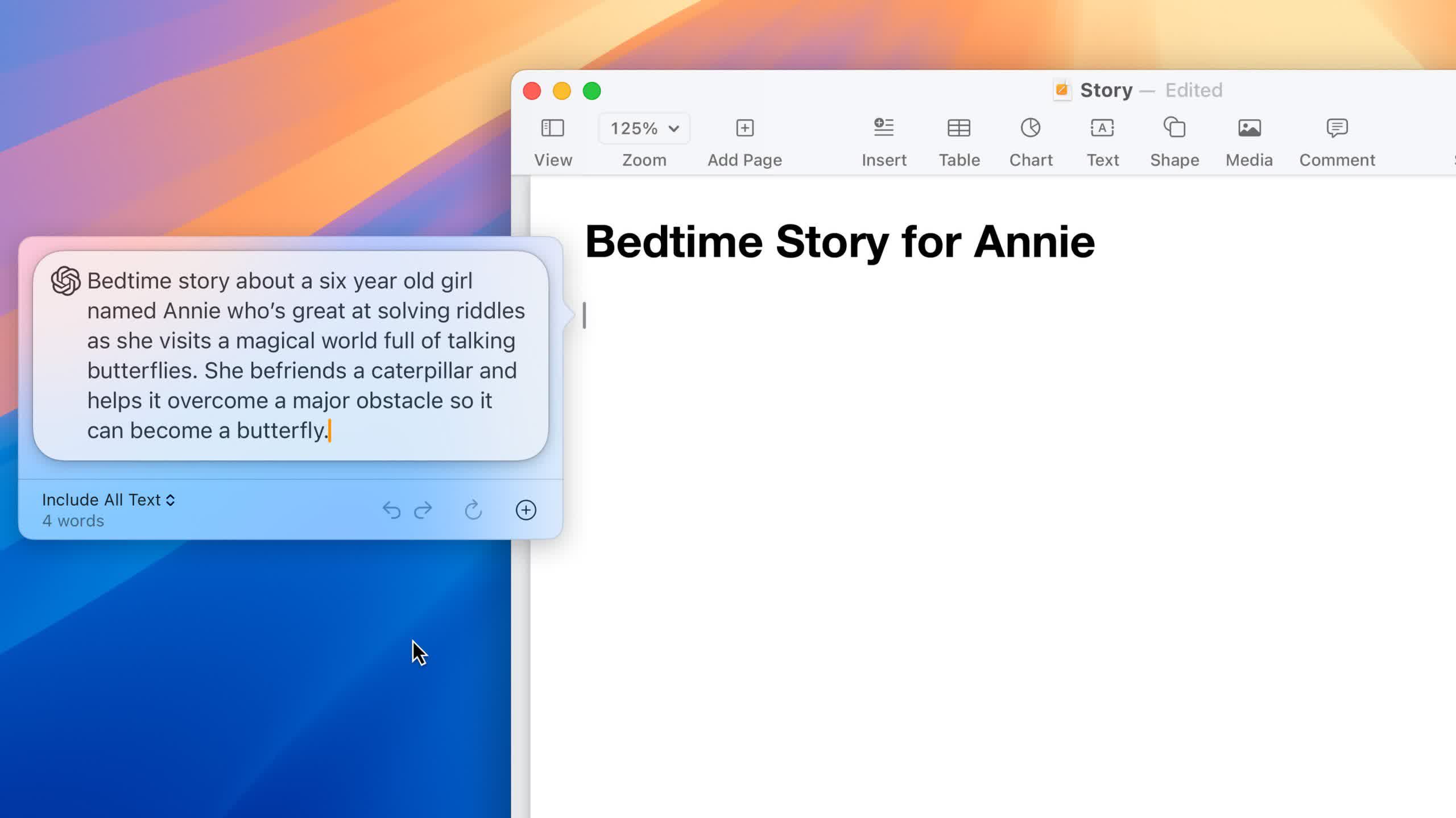In brief: Apple took great care to avoid mentioning “AI” during its 2024 WWDC presentation. Nevertheless, its new “Apple Intelligence” introduces generative AI features to recent Macs, iPads, and iPhones. The forthcoming OS updates will incorporate image generation, text proofing, and context-aware organization.
After months of anticipation, Apple finally unveiled its plans for generative AI at WWDC this week. Starting this fall, the iPhone 15 Pro and all Apple devices equipped with M-series processors will gain beta access to the Cupertino giant’s response to ChatGPT and Copilot.
Apple Intelligence, set to debut this fall in iOS 18, iPadOS 18, and macOS Sequoia, will feature AI capabilities to rewrite text, create images, and organize information across multiple apps. Siri will also be transformed into a generative AI chatbot and assistant, comparable to those from OpenAI and Microsoft.

The new text editing features, named Writing Tools and Rewrite, offer functionality similar to Grammarly across most native apps in the operating system. Users can automatically proof, summarize, and rephrase text written in Mail, Pages, Messages, or other apps. The settings are customizable, including professional, informal, concise, and poetic tones.
Additionally, Apple’s generative model automatically organizes emails and notifications based on priority and category. Previews now include summaries of the entire content rather than just the first few words of the initial sentence.
Users can ask Apple Intelligence to generate images for emojis, presentations, and text conversations. The model can turn basic sketches into detailed pictures and suggest images from scratch based on the content of a writing sample. New photo manipulation tools allow users to remove specific objects without affecting the rest of the composition.

Siri can now understand user queries based on context and the information it reads from various apps. For instance, it can retrieve a file, photo, or other information based on a vague description of its content or the sender.
Furthermore, Siri can plan trips or activities by combining information from Messages, Apple Maps, or other apps. The assistant can also quickly modify device settings or offer tutorials on performing a specific task. Like ChatGPT or Copilot, users can communicate with Siri through text.
However, Siri sometimes requests permission to reference ChatGPT, effectively embedding ChatGPT functionality across Apple’s systems. This capability does not require a ChatGPT account, but OpenAI subscribers can link to their Apple accounts to utilize its paid features seamlessly. Powered by GPT-4o, the AI can also compose text and generate images for various apps.

The integration with OpenAI’s tool is always opt-in, but it might indicate that Apple’s generative AI tools aren’t yet as advanced as those of its competitors. Future updates will allow Siri to connect to other models.
Like Microsoft and others, Apple attempted to alleviate privacy concerns by emphasizing that its generative AI performs tasks entirely on-device without generally contacting cloud servers. However, workloads requiring cloud models will use Apple Silicon servers with independently inspected code rather than competing data hubs. The servers will not save information from devices, and all software involved must be publicly logged for inspection.
Whether Apple Intelligence can avoid the hallucination problem that has plagued all generative AI models remains uncertain. Moreover, integrating ChatGPT into the system brings all the trustworthiness, privacy, and copyright issues that have long surrounded OpenAI’s tool.
Apple Intelligence will only be available in American English at launch this fall, with other languages to follow later.